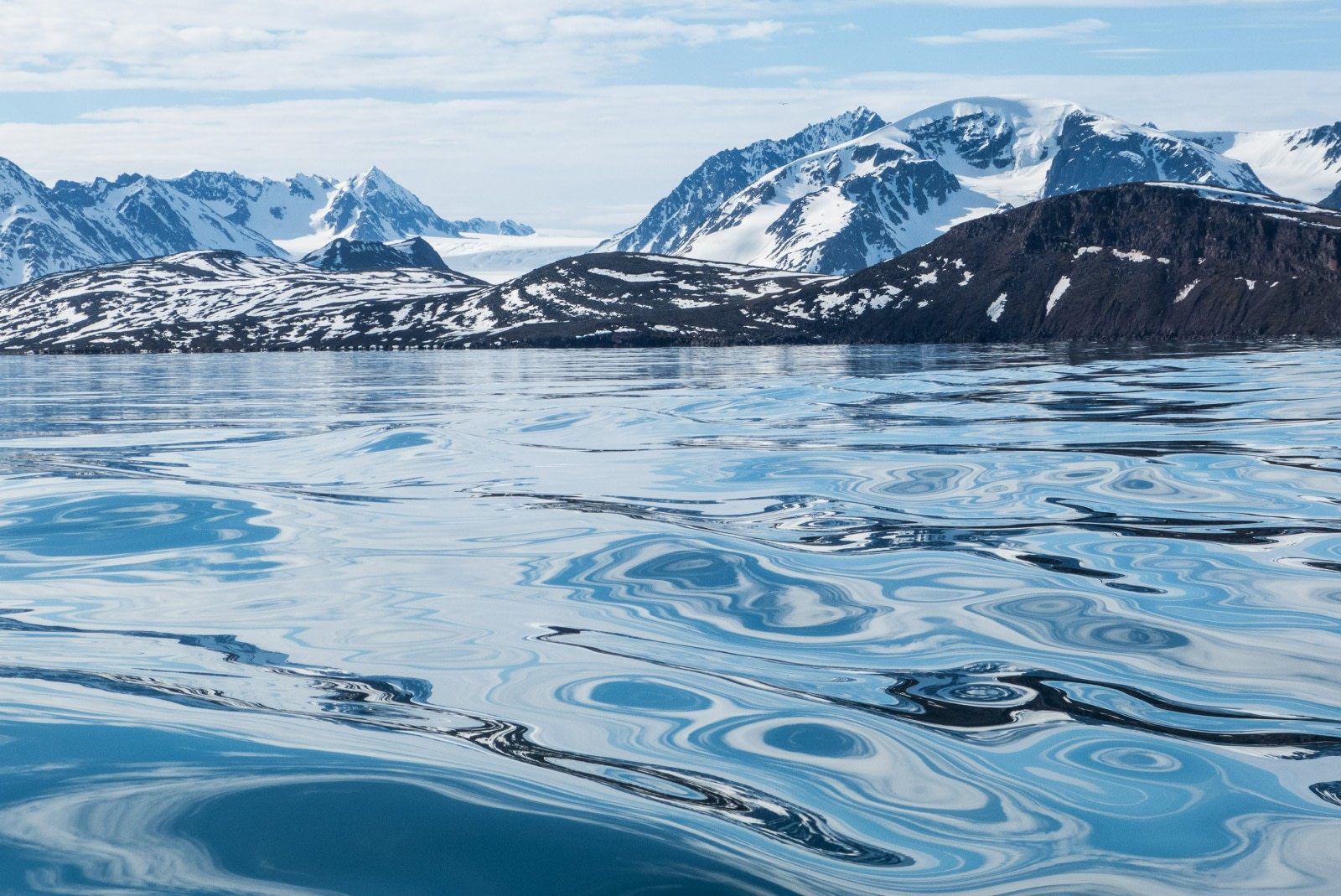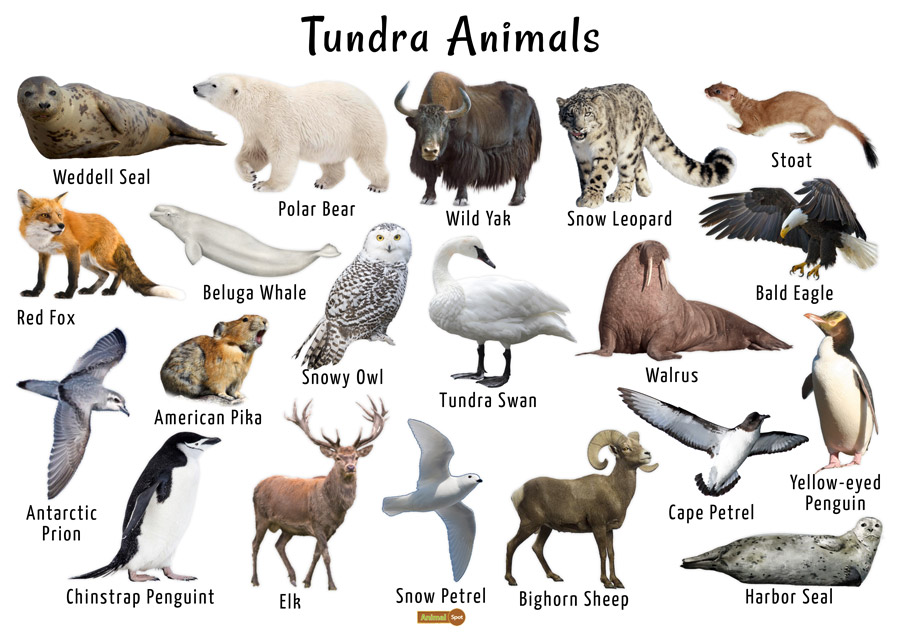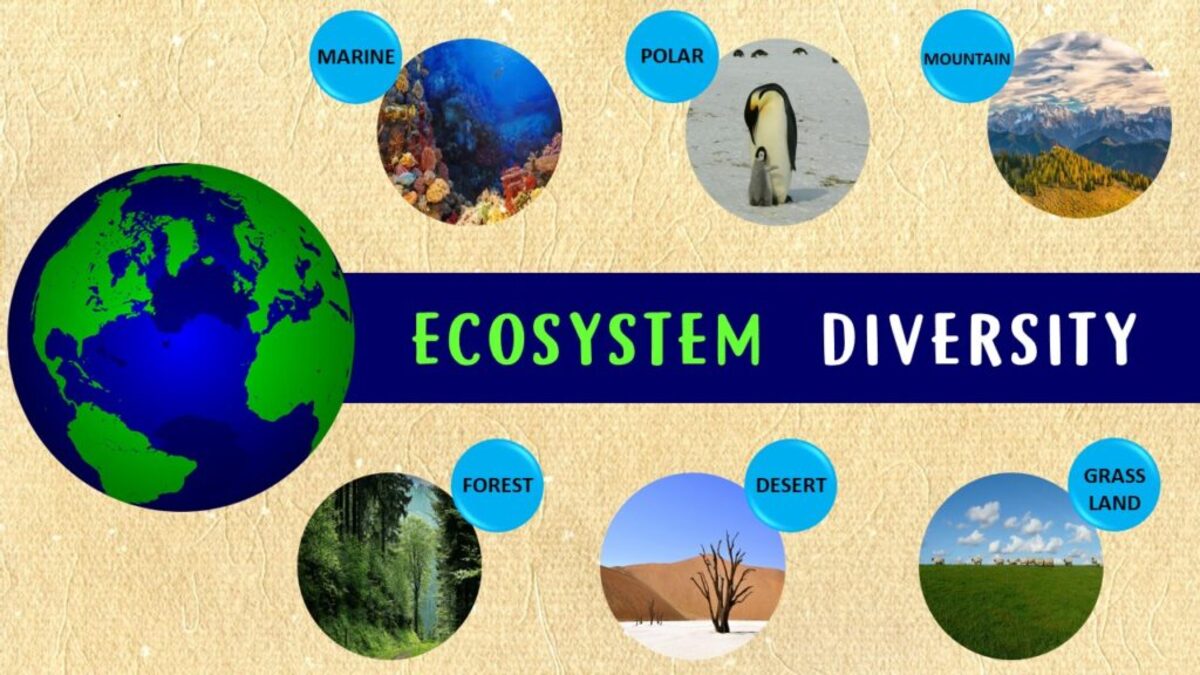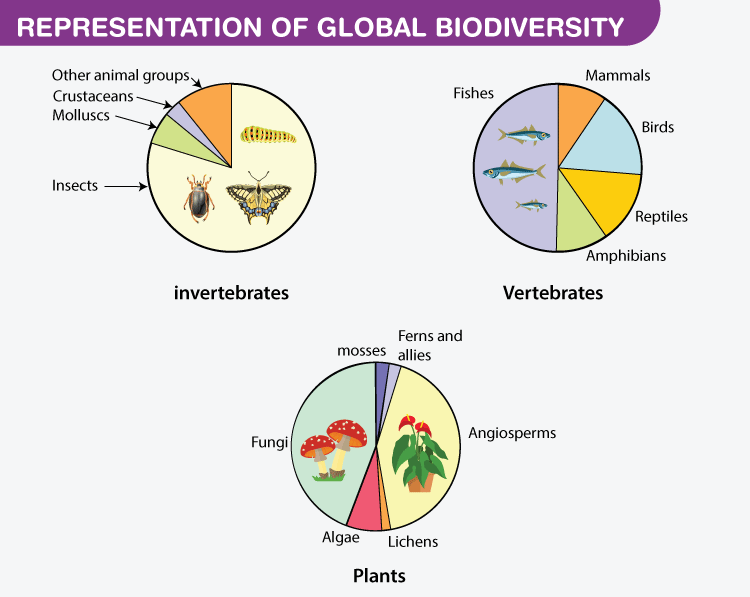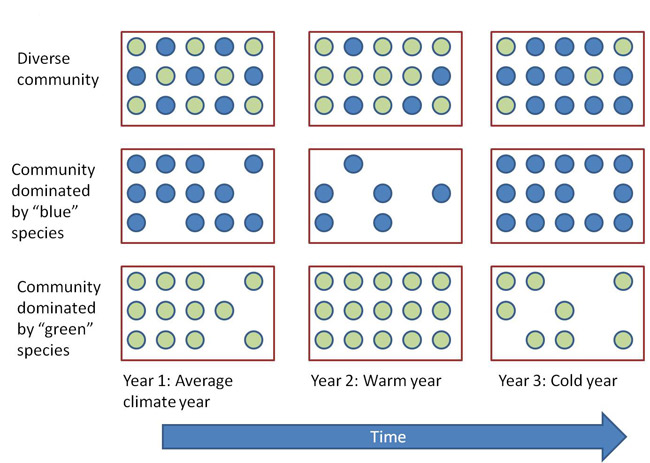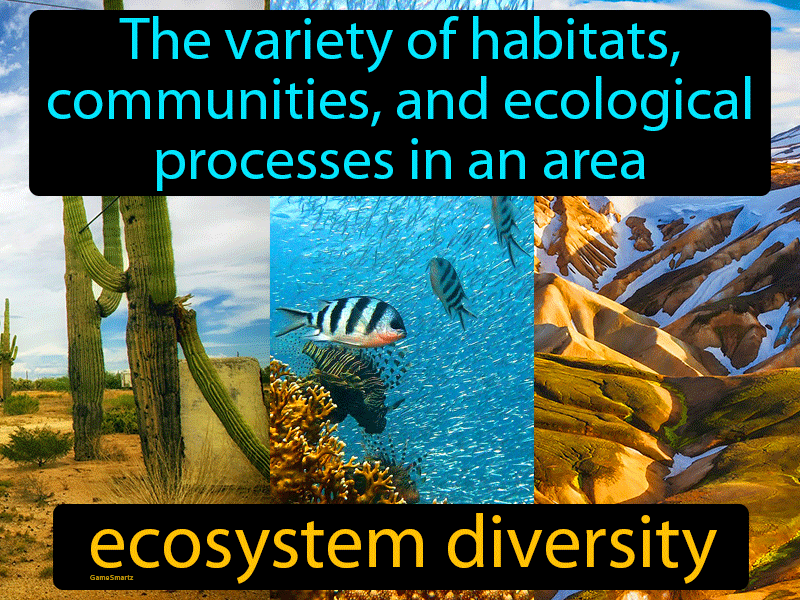Topic tundra ecosystem food web: Explore the intricate Tundra Ecosystem Food Web, where life thrives against the odds in the planet"s most extreme environments, revealing nature"s resilience and beauty.
Table of Content
- What is a tundra ecosystem food web and how does it function?
- Overview of the Tundra Ecosystem
- Primary Producers in the Tundra
- Primary Consumers: Herbivores of the Tundra
- Secondary Consumers: Carnivores and Omnivores
- Tertiary Consumers and Apex Predators
- Decomposers: Essential for Nutrient Recycling
- YOUTUBE: Tundra Biome Food Web
- Impact of Climate Change on the Tundra Food Web
- Adaptations of Flora and Fauna
- Human Impact on the Tundra Ecosystem
- Conservation Efforts and the Future of Tundra Ecosystems
What is a tundra ecosystem food web and how does it function?
A tundra ecosystem food web is a complex network of interactions between various organisms in a tundra biome. It shows the flow of energy and nutrients through different trophic levels in the ecosystem.
The main components of a tundra food web include plants, herbivores, carnivores, and decomposers. Here is a step-by-step explanation of how it functions:
- Producers (Plants): The food web begins with the producers, which are mainly plants adapted to survive in the harsh tundra conditions. These include dry shrubs, mosses, grasses, and lichens.
- Primary Consumers (Herbivores): Herbivores are the next level in the food web. They feed on the plants for energy and nutrients. Examples of primary consumers in the tundra ecosystem are lemmings, voles, Arctic hares, and musk oxen.
- Secondary Consumers (Carnivores): Carnivores in the tundra ecosystem feed on the herbivores. They are the predators in the food web. Examples of secondary consumers include Arctic foxes, wolves, snowy owls, and polar bears. Some carnivores may also consume other carnivores.
- Tertiary Consumers (Top Predators): At the top of the food web, there are tertiary consumers that prey on other carnivores. These can include apex predators like polar bears and human hunters (not natural part of the ecosystem).
- Decomposers: Decomposers, such as bacteria and fungi, play a crucial role in the tundra ecosystem by breaking down dead organisms and recycling nutrients back into the environment. They help in the decomposition of organic matter and the release of nutrients for the producers to utilize.
Overall, the tundra ecosystem food web functions by the transfer of energy and nutrients from one trophic level to another. Energy flows from the producers to different levels of primary, secondary, and tertiary consumers, and eventually, it is returned back to the ecosystem through decomposers.
READ MORE:
Overview of the Tundra Ecosystem
The tundra ecosystem, characterized by its cold, desert-like conditions, is a unique biome that covers about 20% of the Earth"s surface. It is primarily found in the Arctic Circle, though alpine tundra exists on mountains at high elevations worldwide. This ecosystem"s defining features include low biodiversity, simple vegetation structure, and a short growing season with long days that support a burst of biological activity.
- Climate: Extremely cold temperatures dominate, with winters that can drop below -30°C and summers that rarely exceed 10°C. Precipitation is low, mostly falling as snow.
- Soil: Permafrost, a permanently frozen layer beneath the surface, characterizes the soil. It limits the depth at which plants can root but stores vast amounts of organic carbon.
- Vegetation: Consists mainly of mosses, grasses, lichens, and dwarf shrubs. These plants are adapted to survive in harsh conditions with minimal nutrients.
- Wildlife: Despite the extreme conditions, a variety of animals thrive here, including arctic foxes, wolves, caribou, and migratory bird species that utilize the tundra during the summer breeding season.
Adaptations to the cold and the presence of permafrost define the tundra ecosystem"s food web, with every species playing a crucial role in the delicate balance of this environment. The tundra is not just a barren wasteland but a vibrant ecosystem full of life and beauty, showcasing nature"s incredible adaptability.
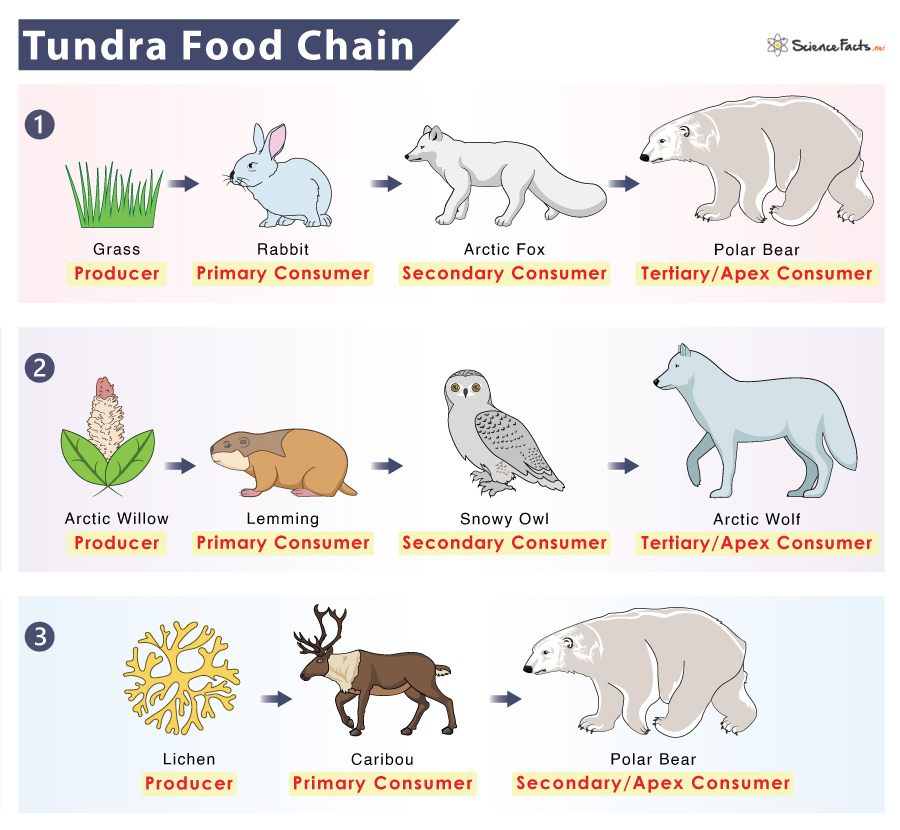
Primary Producers in the Tundra
In the tundra ecosystem, primary producers are the foundation of the food web, converting the sun"s energy into food through photosynthesis. Despite the harsh conditions, these organisms thrive, providing essential nutrients for the rest of the ecosystem.
- Mosses: These are prevalent in the tundra, forming thick mats that cover large areas. They help insulate the ground and retain moisture.
- Lichens: Hardy and resilient, lichens are a symbiotic relationship between a fungus and an algae or cyanobacteria. They can survive in extreme conditions and are a crucial food source for many tundra animals.
- Grasses: Various species of grasses adapt to the cold, providing food for herbivores. They are quick to grow during the short summer season.
- Dwarf Shrubs: These hardy plants are capable of surviving the tundra"s freezing temperatures, contributing significantly to the biome"s biodiversity.
- Algae: Algae, especially those found in meltwater ponds and streams, play a crucial role in the tundra ecosystem by providing food for aquatic and semi-aquatic species.
These primary producers are not only vital for the survival of the tundra"s food web but also for the carbon cycle. They absorb carbon dioxide during photosynthesis, helping to mitigate climate change effects. The resilience and adaptability of these plants are key to sustaining life in the tundra ecosystem.
Primary Consumers: Herbivores of the Tundra
The tundra ecosystem supports a variety of herbivores, which feed on the primary producers, playing a crucial role in the transfer of energy through the food web. These primary consumers have adapted to the harsh conditions and limited food supply.
- Caribou/Reindeer: Perhaps the most iconic of the tundra herbivores, these animals migrate in large herds and feed on lichens, mosses, and grasses.
- Musk Oxen: With their thick coats, musk oxen are well adapted to the cold and feed on tundra grasses, willows, and mosses.
- Lemmings: These small rodents are vital to the tundra food web, feeding on plant material and seeds. They are a primary food source for many predators.
- Arctic Hares: These hares have white winter coats that provide camouflage in the snow, feeding on woody plants, mosses, and lichens.
- Voles: Similar to lemmings, voles are important herbivores in the tundra, consuming a variety of plant materials.
- Geese and Other Migratory Birds: In the summer, many species of birds migrate to the tundra to feed on its abundance of insects, seeds, and plants, playing a significant role in the ecosystem"s nutrient cycling.
These primary consumers not only support the higher trophic levels by providing energy to carnivores and omnivores but also contribute to the tundra"s ecological balance through their grazing, which helps control the plant population and maintain habitat structure.
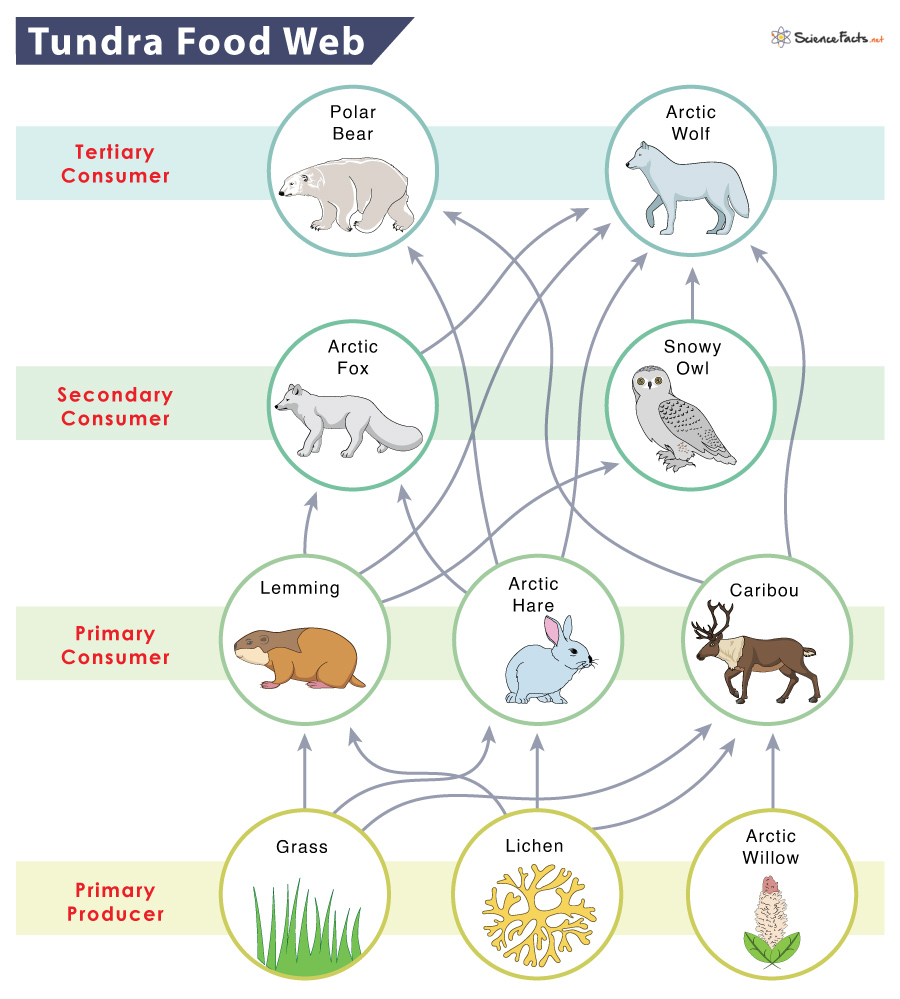
Secondary Consumers: Carnivores and Omnivores
In the tundra ecosystem, secondary consumers play a critical role in maintaining the balance of the food web. These animals, both carnivores and omnivores, feed on primary consumers, controlling their populations and ensuring a dynamic ecosystem.
- Arctic Foxes: These small foxes are adaptable predators that feed on rodents, birds, and even carrion. In winter, their white coats provide camouflage against the snow.
- Wolves: Wolves are important apex predators in some tundra regions, preying on large herbivores like caribou and musk oxen. They hunt in packs and play a key role in the natural selection process.
- Polar Bears: Although primarily associated with sea ice environments, polar bears are also part of the coastal tundra food web, where they prey on seals and scavenge for food.
- Snowy Owls: These birds are powerful predators of the tundra, hunting lemmings, voles, and other small mammals. Their keen eyesight and silent flight make them formidable hunters.
- Ermines (Stoats): Ermines prey on small mammals such as lemmings and voles. Their fur changes color with the seasons for camouflage.
- Arctic Hares and Ptarmigans: Though primarily herbivores, these species can exhibit omnivorous behavior by occasionally eating insects and other animal matter to supplement their diet.
These carnivores and omnivores are essential for controlling herbivore populations, preventing overgrazing, and contributing to the biodiversity and health of the tundra ecosystem. Their presence ensures a balanced and interconnected food web.
Tertiary Consumers and Apex Predators
Tertiary consumers and apex predators stand at the top of the tundra ecosystem food web, playing a crucial role in controlling the population of secondary consumers and maintaining the ecological balance. These predators have no natural enemies within the ecosystem and are key to its health and stability.
- Polar Bears: As one of the most iconic apex predators, polar bears primarily hunt seals but will also scavenge on carcasses, demonstrating their critical role in nutrient cycling within coastal tundra ecosystems.
- Wolves: Top predators in many tundra regions, wolves influence the distribution and numbers of a wide range of species below them in the food web, contributing to ecosystem diversity.
- Golden Eagles: These large birds of prey hunt mammals like lemmings and hares, and their wide range allows them to impact populations across different areas of the tundra.
- Arctic Foxes: While they are also secondary consumers, in some situations, arctic foxes act as tertiary consumers by preying on other carnivores" young or competing for carrion.
These apex predators and tertiary consumers are indispensable for the health of the tundra ecosystem. They help regulate the populations of other animals, ensuring a balance between different species and preventing any one group from overwhelming the habitat. Their presence underscores the interconnectedness of life in the tundra.

Decomposers: Essential for Nutrient Recycling
Decomposers play a vital role in the tundra ecosystem by breaking down dead organic matter, returning nutrients to the soil, and supporting new plant growth. This process is crucial for nutrient cycling and the overall health of the ecosystem.
- Bacteria and Fungi: These microorganisms are the primary decomposers in the tundra, working tirelessly to break down the remains of plants and animals despite the cold temperatures.
- Detritivores: Including earthworms and some insects, these organisms feed on dead organic material, further breaking it down and enriching the soil.
- Mosses: While primarily producers, mosses also play a role in decomposition by absorbing and retaining moisture, which helps decomposer bacteria and fungi in their work.
The slow rate of decomposition in the cold tundra environment means that nutrients are released slowly, but decomposers ensure that these essential elements are recycled back into the ecosystem. This process supports the growth of primary producers and sustains the food web from the ground up.
Tundra Biome Food Web
Explore the breathtaking beauty of the Tundra Biome with its vast expanse of frozen landscapes and unique wildlife. Immerse yourself in this enchanting video that showcases the wonders of this remote and pristine ecosystem.
Arctic Food Chain | Tundra Biome and Arctic Ecosystem
Dive into the fascinating world of the Arctic Food Chain and uncover the intricate connections between its diverse inhabitants. Watch this captivating video to witness how each link in this delicate chain ensures the survival and balance of this remarkable polar ecosystem.
Impact of Climate Change on the Tundra Food Web
Climate change poses significant challenges to the tundra ecosystem, affecting its delicate food web and the survival of species that inhabit it. The warming climate impacts the tundra in multiple ways, altering the balance of life in this fragile environment.
- Permafrost Thaw: Rising temperatures lead to the thawing of permafrost, which can release vast amounts of greenhouse gases and disrupt the lives of plants and animals adapted to permafrost conditions.
- Vegetation Shifts: Warmer conditions may encourage the growth of shrubs and trees, altering the composition of the tundra and impacting the species that rely on open landscapes and specific types of vegetation.
- Species Distribution: As the climate warms, some species may migrate northward or to higher elevations, disrupting existing food webs and introducing competition for resources.
- Changing Ice Conditions: The reduction in sea ice affects marine species and those terrestrial species, like polar bears, that rely on sea ice for hunting and migration.
- Increased Fire Frequency: Warmer and drier conditions can lead to more frequent wildfires, which can drastically alter habitats and the availability of food for various species.
The impact of climate change on the tundra food web highlights the interconnectedness of ecosystems and the importance of addressing global climate issues to preserve these unique habitats for future generations.

Adaptations of Flora and Fauna
The harsh conditions of the tundra have led to remarkable adaptations among its flora and fauna, enabling them to survive and thrive in an ecosystem where others would fail. These adaptations are crucial for the balance and sustainability of the tundra ecosystem.
- Flora Adaptations:
- Low Growth: Plants grow close to the ground to minimize exposure to cold winds and to take advantage of the warmth retained by the soil.
- Perennial Life Cycle: Many plants are perennials, surviving for more than one season and reducing the need for frequent reproduction.
- Darker Leaves: Some plants have darker leaves to absorb more solar heat.
- Antifreeze Proteins: Certain plants produce substances that prevent their cells from freezing.
- Fauna Adaptations:
- Insulation: Animals like the Arctic fox and musk oxen have thick fur and fat layers for insulation against the cold.
- Migratory Patterns: Many bird species migrate to warmer regions during the harsh winters.
- Camouflage: Animals change color with the seasons; for example, the Arctic hare and ptarmigan turn white in winter to blend in with the snow.
- Behavioral Adaptations: Some species, like caribou, migrate to find food, while others, like the Arctic ground squirrel, hibernate during the winter months.
These adaptations are not just about survival; they are about resilience and the intricate balance of life in one of the planet"s most extreme environments. The flora and fauna of the tundra demonstrate the incredible capacity for life to adapt to its surroundings.
Human Impact on the Tundra Ecosystem
The tundra ecosystem, while seemingly remote and isolated, is not immune to the impacts of human activities. These impacts can alter the delicate balance of this unique environment, affecting both the flora and fauna that call it home.
- Climate Change: Human-induced climate change is perhaps the most significant impact, leading to warmer temperatures, melting permafrost, and changing precipitation patterns that affect the entire tundra ecosystem.
- Pollution: Airborne pollutants from industrial activities can travel long distances and deposit in the tundra, affecting water and soil quality and thus the health of plants and animals.
- Oil and Gas Development: The extraction of oil and gas can lead to habitat destruction, pollution, and disturbances to wildlife from noise, human activity, and infrastructure development.
- Mining: Mining activities can cause physical disturbances to the landscape, pollute water sources, and disrupt animal migration patterns.
- Overhunting and Fishing: Unsustainable hunting and fishing practices can deplete populations of certain species, which has ripple effects throughout the food web.
However, increased awareness and conservation efforts are underway to mitigate these impacts, aiming to preserve the tundra"s biodiversity and ecological integrity for future generations. The resilience of the tundra ecosystem, combined with responsible human actions, can ensure its survival and health.

READ MORE:
Conservation Efforts and the Future of Tundra Ecosystems
The future of tundra ecosystems hinges on effective conservation efforts aimed at preserving this unique biome"s biodiversity and ecological balance. Recognizing the challenges posed by climate change and human activities, various strategies are being implemented to ensure the resilience and sustainability of the tundra.
- Protected Areas: Establishing national parks and wildlife reserves to protect significant portions of the tundra from development and preserve habitats for flora and fauna.
- Climate Change Mitigation: Efforts to reduce greenhouse gas emissions on a global scale are crucial to slowing the rate of warming in the Arctic and preserving the permafrost layer.
- Research and Monitoring: Conducting scientific research to better understand the tundra ecosystem and monitoring changes over time to adapt conservation strategies accordingly.
- Sustainable Practices: Promoting sustainable hunting, fishing, and resource extraction practices to minimize the impact on the ecosystem and ensure the long-term viability of these activities.
- Education and Awareness: Raising awareness about the importance of the tundra and the threats it faces to build support for conservation efforts among the public and policymakers.
Through these and other efforts, there is hope for the preservation of the tundra ecosystems. By balancing human needs with environmental stewardship, we can protect these landscapes for the myriad species that depend on them and for future generations to appreciate and enjoy.
The tundra ecosystem, a web of life in the planet"s harshest conditions, demonstrates nature"s resilience. Through understanding and protecting it, we ensure the survival of this unique biome for future generations to marvel at and learn from.

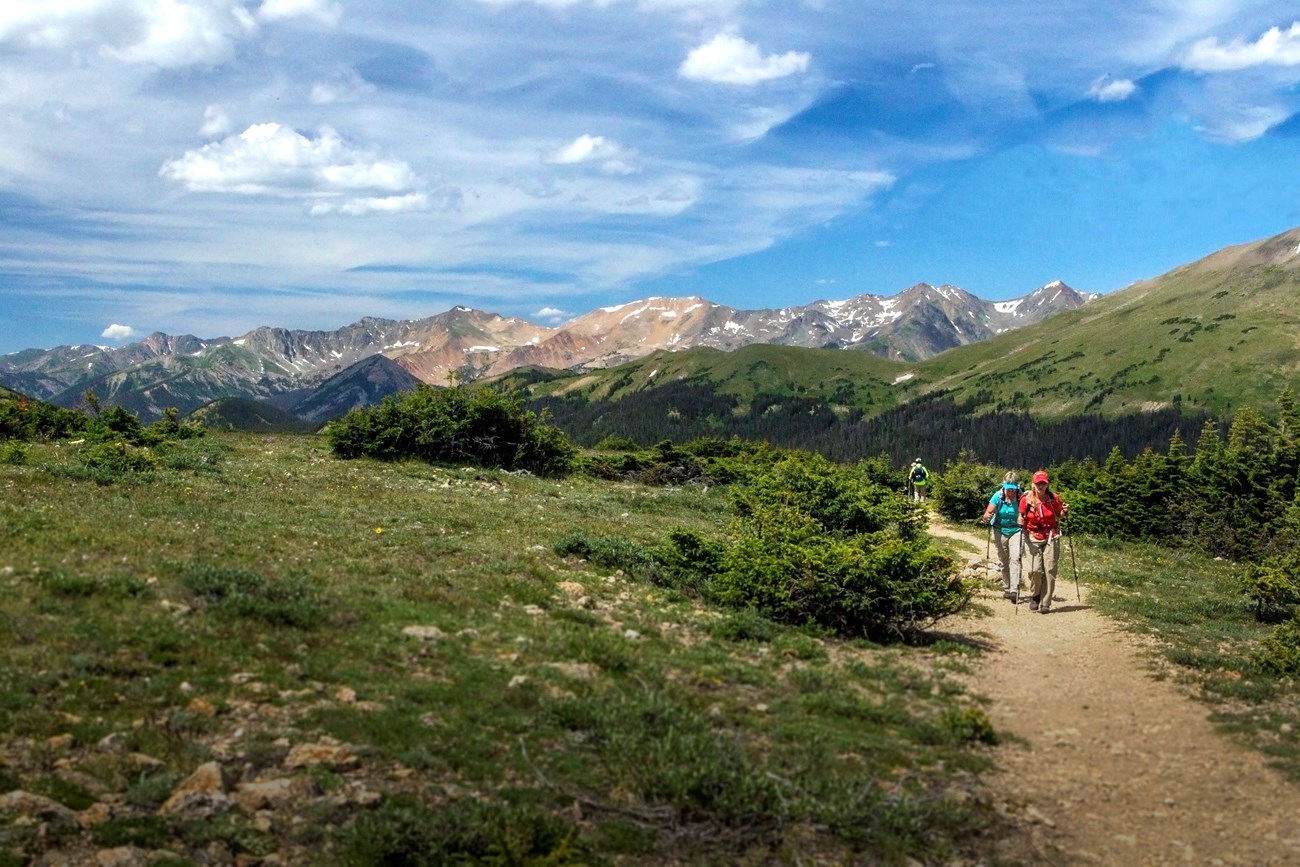
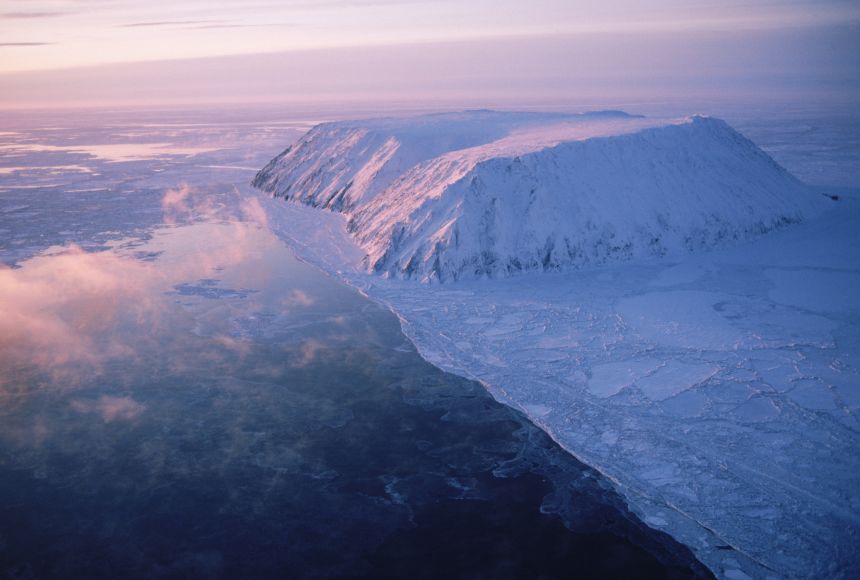
:max_bytes(150000):strip_icc()/GettyImages-901482062-6470b1099c6a47a881f9a22d7bca0d0a.jpg)
